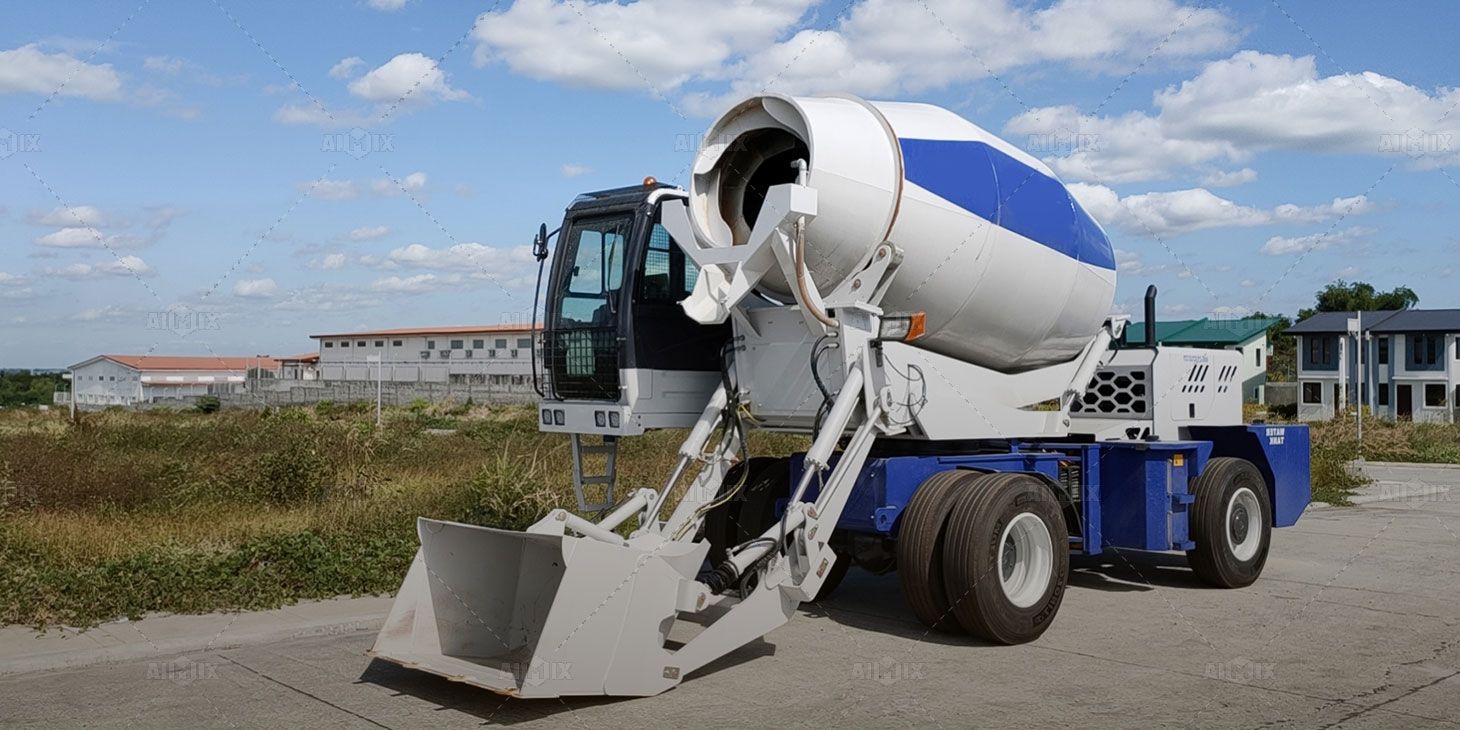Ensuring Precise Material Measurement and Mixing in a Self-Loading Concrete Mixer
- By AIMIX Group
- •
- 17 May, 2024
- •
The accuracy of material measurement and the consistency of mixing are paramount in achieving high-quality concrete. Self-loading concrete mixers, with their advanced technology, can significantly enhance these aspects. This article explores the importance of precise material measurement, the advanced features of self-loading mixers, and best practices to ensure consistent mixing.
Importance of Accurate Material Measurement
Impact on Concrete Quality
Accurate material measurement directly influences the quality of concrete produced. The proportions of cement, water, aggregates, and additives must be meticulously controlled to achieve the desired strength, durability, and workability. Over- or under-measuring any component can lead to concrete that is too weak or too brittle, impacting the structural integrity of the construction. Consistency in measurement ensures that every batch meets the specified standards, crucial for large-scale projects where uniformity is essential.Reducing Waste and Cost
Precision in material measurement also plays a vital role in reducing waste and controlling costs. Overestimating materials leads to excess use, which is not only wasteful but also increases the overall cost of the project. Conversely, underestimating materials can cause delays as additional supplies are procured. Self loading truck mixer equipped with accurate weighing systems ensure that the right amount of each material is used, optimizing resource utilization and minimizing wastage.Advanced Features of Self-Loading Concrete Mixers
Automated Weighing Systems
Modern self-loading concrete mixers come with integrated automated weighing systems that ensure precise measurement of materials. These systems use load cells and sensors to weigh each ingredient before it enters the mixing drum. The automation eliminates human error, ensuring that the correct proportions are consistently maintained. This level of precision is especially beneficial for complex mixes requiring exacting standards.Real-Time Monitoring and Adjustments
Another advanced feature of self-loading concrete mixers is real-time monitoring and adjustment capabilities. Equipped with sophisticated software and digital interfaces, these mixers allow operators to monitor the mixing process in real time. Adjustments to the mix can be made on the fly, based on real-time data, ensuring that any deviations are promptly corrected. This dynamic adaptability is crucial for maintaining the quality of concrete, especially in varying environmental conditions or when switching between different mix designs.Find a best mixer here: https://aimixglobal.com/mini-and-small-asphalt-mixing-plant/.Best Practices for Consistent Mixing
Calibrating Equipment
To ensure the accuracy of the automated systems, regular calibration of the equipment is essential. Calibration involves adjusting the scales and sensors to maintain their precision over time. This process should be performed according to the manufacturer’s specifications and at regular intervals to account for wear and tear. Proper calibration ensures that the weighing systems remain accurate, thereby maintaining the consistency of the concrete mix.Operator Training and Maintenance
Even with advanced technology, the role of the operator remains critical. Comprehensive training on the use of self loading mixer for sale and their advanced features is necessary to maximize their potential. Operators should be well-versed in interpreting the data provided by the monitoring systems and making the necessary adjustments. Regular maintenance of the mixer, including cleaning and inspection of the drum, blades, and weighing systems, ensures that the equipment remains in optimal condition, thereby supporting consistent and high-quality mixing. In conclusion, ensuring precise material measurement and mixing in a self-loading concrete mixer involves a combination of advanced technology and diligent practices. Automated weighing systems and real-time monitoring significantly enhance accuracy, while regular calibration and operator expertise ensure that the equipment performs at its best. By adhering to these principles, construction projects can achieve superior concrete quality, reduce waste, and control costs effectively.AIMIX Global Products
- Stone Crusher
- rock crusher
- Limestone Crusher
- granite crusher
- quartz crusher
- quarry crusher
- Gravel Crusher
- mobile crusher plant
- stone crusher plant
- crushing plant
- mobile impact crusher
- mobile jaw crusher
- mobile crusher
- mobile cone crusher
- mini self loading concrete mixer
- self loading mobile concrete mixture
- self loading concrete mixer for sale
- self loading concrete mixer truck
- self loading cement mixer
- asphalt plant for sale
- asphalt mobile plant
- drum mix plant
- mini asphalt plants for sale
- portable asphalt mixing plant
- asphalt hot mix plant
- batching plant manufacturers
- concrete plant for sale
- small concrete batch plant
- mini cement plant
- mobile concrete plant
- portable batch plant
- stationary concrete batching plant
- ready mix concrete plant
- how does a batching plant work
- concrete batching plant price
- ready mix concrete plant in bangladesh
- concrete batching plant in uae
- concrete batching plant indonesia
- concrete batching plant malaysia
- concrete batching plant for sale australia
- concrete batching plant Philippines
- concrete batching plant for sale UK
- concrete batching plant in saudi arabia
- concrete pump
- concrete mixer with pump
- mobile concrete pump
- portable concrete pump
- concrete trailer pump
- mini concrete pump
- small concrete pumps
- diesel concrete pump
- electric concrete pump
- hydraulic concrete pump
- dry mix mortar plant
- small dry mortar plant
- automatic dry mortar plant equipment
- big dry mortar plant
- dry mortar production line manufacturer
- dry mortar production line
- Tile adhesive manufacturing plant

